A Changing Landscape
in American Precision Machining
The manufacturing world is evolving faster than ever. Supply chains are stretched, skilled labor
is in short supply, and precision is no longer just a goal—it’s an expectation. For design
engineers and supply chain managers, staying ahead means embracing new strategies that ensure
reliability, flexibility, and long-term success.
At GrovTec Machining, we’ve learned that even the smallest machined components can be
mission-critical. While we specialize in manufacturing, our deeper mission is to help our
industry peers navigate challenges, learn from each other, and build a more resilient future for
precision machining.
In this post, we’ll explore three major takeaways that can help you strengthen your supply chain,
optimize your production strategy, and prepare for the future of manufacturing.
1. Small Parts, Big Impact: The Hidden Risk in Supply Chains
Have you ever been in a situation where a single missing part delayed an entire assembly or
production line? If so, you’re not alone. Many supply chain professionals focus on securing high-
visibility, high-cost components but often underestimate the importance of the smaller, precision-
machined parts that make everything work.
Lesson #1: Build Redundancy into Your Supply Chain
One of the best ways to prevent supply chain disruptions is by implementing a stock-and-
release strategy. This approach allows manufacturers to produce components in advance and
store them for scheduled releases, ensuring parts are readily available when demand spikes or
unforeseen delays occur.
Real-World Example: One aerospace company we work with saw an unexpected increase in
demand for a large space program. Due to unforeseen circumstances, they grounded a vehicle
and needed to build new and because they had stock on hand with a blanket order agreement
with us, they avoided a 3-month delay and kept their project moving forward by calling out parts
we had ran ahead on.
How You Can Apply This:
Evaluate which components in your supply chain could benefit from a stock-and-release
program.
Work with suppliers who can support annual estimated usage (AEU) models to
maintain flexibility.
Consider diversifying your vendor base to avoid single-source dependencies.
2. Precision Manufacturing is Evolving: How to Stay Ahead
Beyond supply chain bottlenecks, another major challenge facing the manufacturing industry is the increasing complexity of machined components. Whether in Aerospace & Defense, Medical& Dental, Electronics, or Oil & Gas, tolerances are getting tighter, regulations are increasing, and design engineers are constantly pushing the limits of material capabilities.
Lesson #2: Embrace Automation & Smart Manufacturing
With labor shortages affecting machinists, toolmakers, and quality inspectors, many
manufacturers are turning to automation and AI-driven processes to increase efficiency and
consistency.
Emerging Trends Worth Watching:
✅ Lights-Out Machining: Fully automated CNC machines that run unattended overnight,
increasing capacity without additional labor costs.
✅ AI in Quality Control: Automated vision inspection and real-time statistical process control
to reduce defects.
✅ Digital Twins & Predictive Analytics: Using real-time data modeling to simulate machining
outcomes and prevent inefficiencies before they happen.
How You Can Apply This:
If you’re a design engineer: Collaborate with machinists early in the design phase to
understand manufacturability and reduce iteration cycles.
If you’re in supply chain management: Seek out partners who are investing in
automation and lean manufacturing principles to ensure consistency and shorter lead
times.
For the entire industry: Consider how AI-driven demand forecasting can help predict
inventory needs and reduce supply chain volatility.
3. Addressing the Skilled Labor Shortage: Investing in the
Next Generation
One of the biggest concerns in manufacturing today is the aging workforce. Experienced
machinists and toolmakers are retiring, and fewer young professionals are entering the trade.
Without action, this talent gap could slow production, increase costs, and make it harder to
maintain high-quality standards.
Lesson #3: Support Workforce Development & Apprenticeships
Manufacturing is one of the most rewarding careers available today, but the industry needs to do
a better job of showing younger generations why it’s a viable, fulfilling career path.
What’s Working:
✅ Apprenticeship & Mentorship Programs: Pairing seasoned machinists with apprentices to
pass down knowledge.
✅ Cross-Training Teams: Encouraging employees to develop multiple skill sets to reduce
dependency on a single expert.
✅ Technology + Human Expertise: Instead of replacing skilled workers, advanced CNC
programming and AI-driven systems can augment human decision-making and make jobs more
accessible.
How You Can Apply This:
Encourage young professionals to consider careers in precision machining through
partnerships with technical schools.
Invest in cross-training programs to help employees upskill and become more versatile.
Stay informed about automation and AI to bridge the gap where skilled labor is lacking.
Final Thoughts: Manufacturing Success is Built on Preparation
Manufacturing success isn’t just about making great parts—it’s about anticipating challenges
before they become problems.
✅ By strengthening your supply chain, you can ensure that even the smallest parts don’t
become the biggest bottlenecks.
✅ By embracing automation and AI, you can stay ahead in an industry that’s becoming more
complex every day.
✅ By investing in the next generation of machinists, you can future-proof your workforce and
keep manufacturing strong for decades to come.
We believe in continuous improvement, shared knowledge, and helping others in the
industry thrive. Whether you’re an engineer designing the next breakthrough product or a
supply chain manager keeping production moving, we hope these insights help you navigate the
evolving world of precision machining with confidence.






